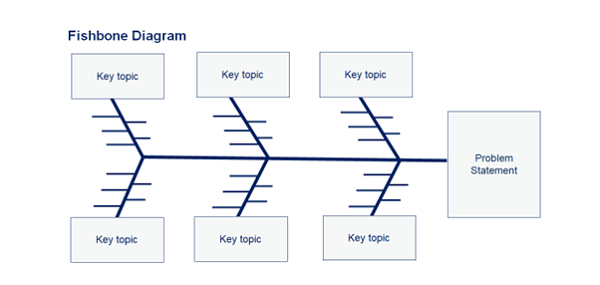"The problems of the world cannot be solved by thinking the same way we thought when we created them." - Albert Einstein
Problem solving is a skill that is essential for success in both personal and professional life. It is the ability to identify and articulate problems, gather information, generate solutions, and implement those solutions effectively.
There are many different approaches to problem solving, but one of the most effective is the 8-step problem-solving process. This process is structured and systematic, which helps to ensure that problems are solved efficiently and effectively.
The 8 steps of the problem-solving process are:
Define the problem
This is the first and most important step in the problem-solving process. If you do not clearly define the problem, you'll have a hard time solving it.
So how do you define a problem? Here are a few tips:
- be specific - do not just say, "the application process lead time is too long."; instead, say something like "the current lead time for the application process is 40 working days”
- use data - if you have data, use it to support your definition of the problem. For example, you could say "the average process lead time has increased by 20% in the past 6 month."
- be objective - do not let your emotions get in the way of defining the problem. For example, don't say "Our lead time is terrible." Instead, say something like "the process lead time is not meeting our customers’ expectations."
Once you've defined the problem, you'll have a much better understanding of what you need to solve. You'll also be able to narrow down the scope of the problem and identify the root cause.
Here is an example of a well-defined problem statement:
The application process lead time has increased by 20% on average to 40 days, in the past 6 months.
This problem statement is specific, uses data, and is objective. It also includes a measure, which is the 20% average increase in lead time. This measure will help to gauge the effectiveness of the final solution. Your problem statement should always include some sort of measure but no suggested solution!
Break down the problem
Once the problem has been defined, you can break it down into smaller, more manageable problems. This will make it easier to identify the root cause of the problem. For example, if the problem is that a process is not producing the desired output, you could break the problem down into the following smaller problems:
- the person in the process is not properly trained.
- the person doing the process is not processing the input correctly.
Set a target
What is the desired outcome of the problem-solving process? What are the specific goals that need to be achieved? It is important to set a clear target so that you know when the problem has been solved. For example, the target for the process problem could be to have the process producing the desired output within 24 hours.
Analyse the root cause
The root cause of the problem is the underlying issue that is causing the problem to occur. It is important to identify the root cause so that it can be addressed effectively. Several techniques can be used to analyse the root cause of a problem, such as the 5 Whys, Fishbone diagrams, and Pareto charts.

Develop Countermeasures
Once the root cause of the problem has been identified, countermeasures can be developed to address it. Countermeasures are specific actions that can be taken to prevent the problem from occurring again. For example, the countermeasures for a process problem could include:
- create Standard Operating Procedures and the “best-known way” of doing the process”
- retraining everyone in the new way of working
- create a control plan to ensure that the input information is being processed correctly 100% of the time
Implement countermeasures
The countermeasures that have been developed need to be implemented. This may involve making changes to processes, procedures, or training. It is important to monitor the implementation of the countermeasures to ensure that they are effective.
Evaluate the results
Once the countermeasures have been implemented, it is important to evaluate the results. Did the countermeasures solve the problem? If not, further action may be needed. For example, if the process problem has not been solved, you may need to identify a new root cause and develop new countermeasures.
Standardise and share lessons learned
Once the problem has been solved, it is important to standardise the solution so that it can be used to prevent the problem from occurring again. The lessons learned from the problem-solving process should also be shared so that others can benefit from them. For example, you could create a standard operating procedure for the new way of working or develop a training program for the staff involved.
By following these steps, you can solve problems more effectively and efficiently.
Here are some additional tips for problem-solving:
- be curious - be willing to investigate problems with an open mind and a desire to learn
- be collaborative - involve others in the problem-solving process to get different perspectives and ideas
- use data and evidence - make decisions about solutions based on data and evidence
- be persistent - do not give up on a problem until you have found a solution that works
- be optimistic - believe that you can solve the problem and do not be afraid to take risks
By following these tips, you can improve your problem-solving skills and become more effective in your personal and professional life.
So, what are you waiting for? Start solving some problems today.


